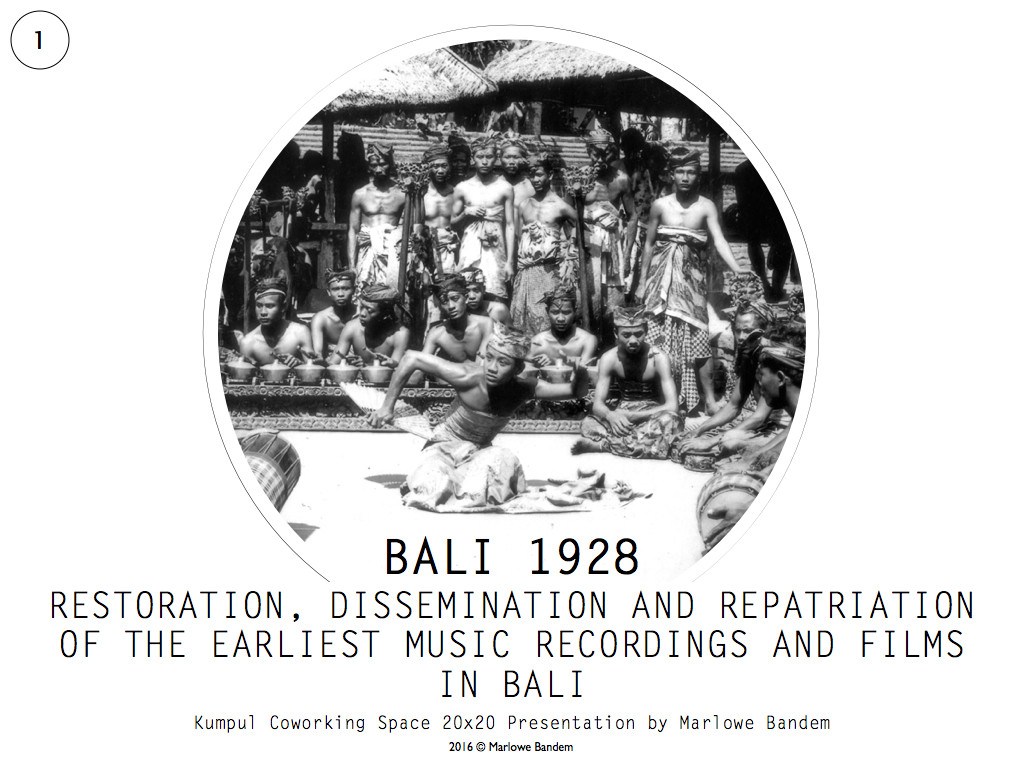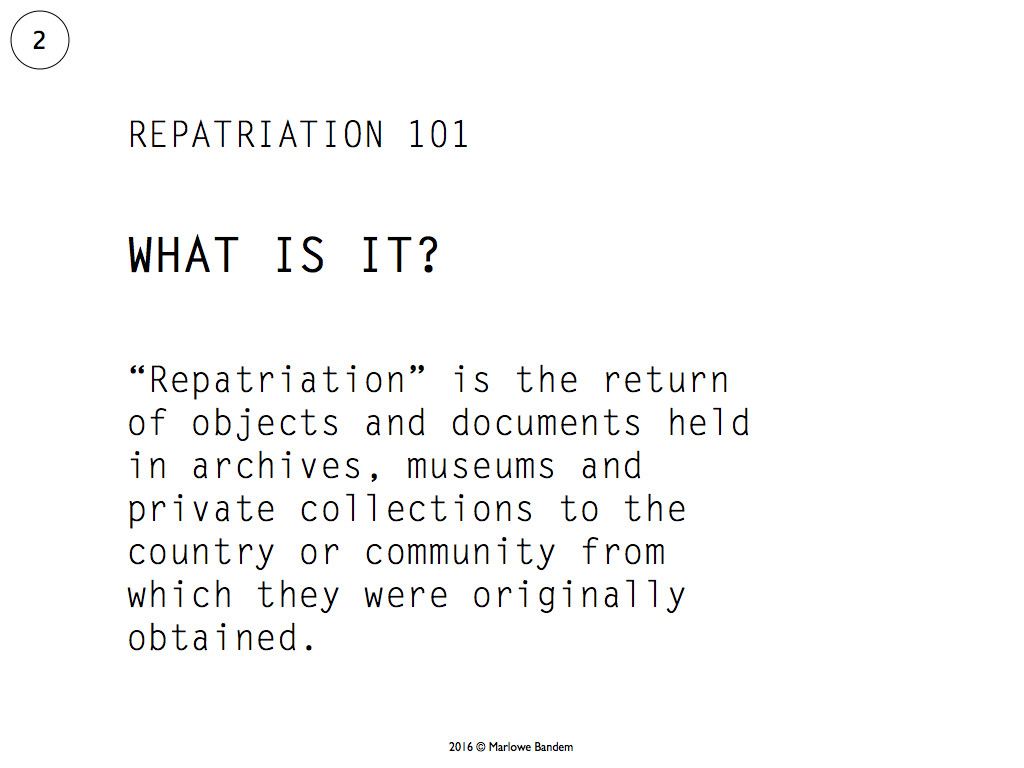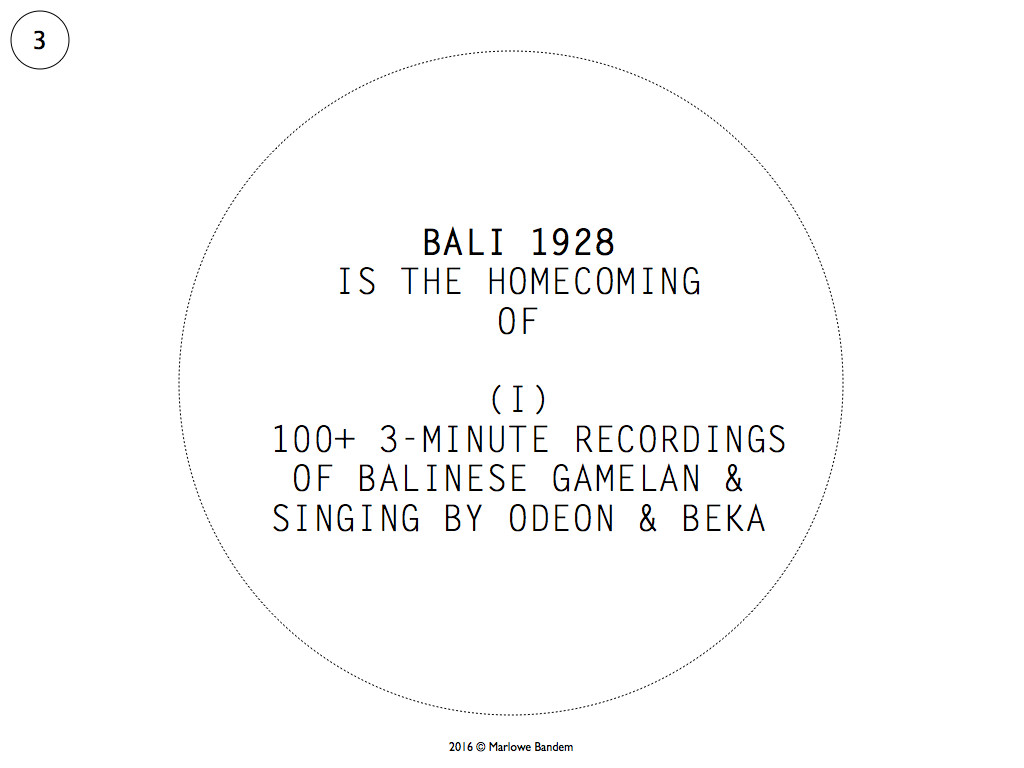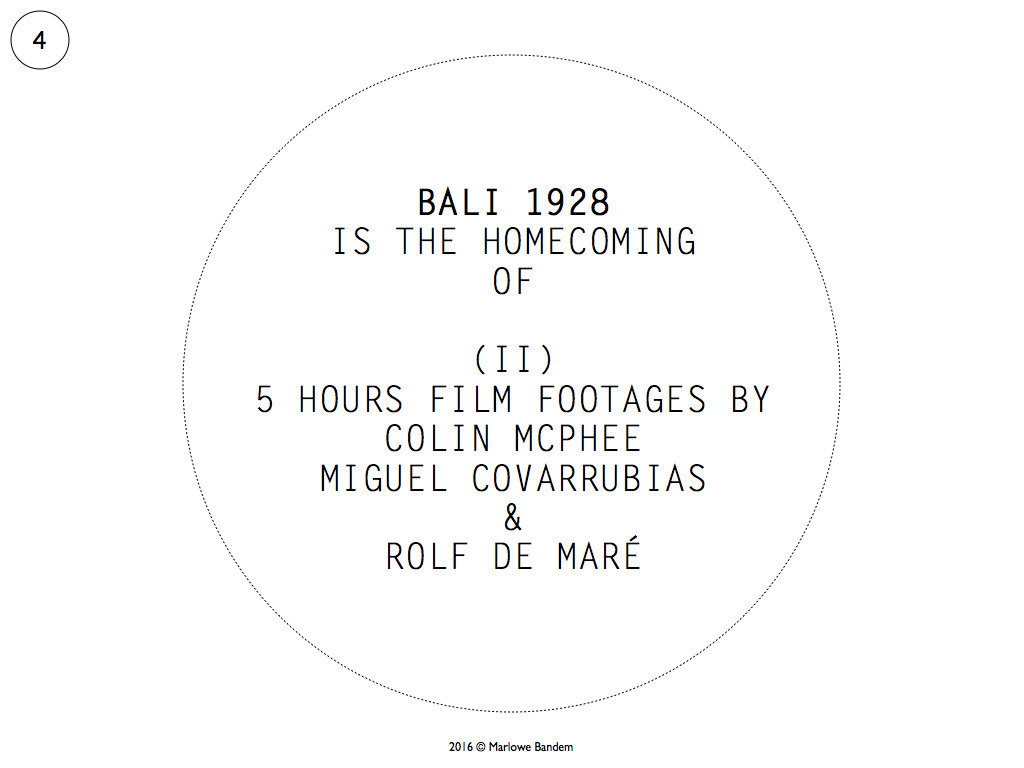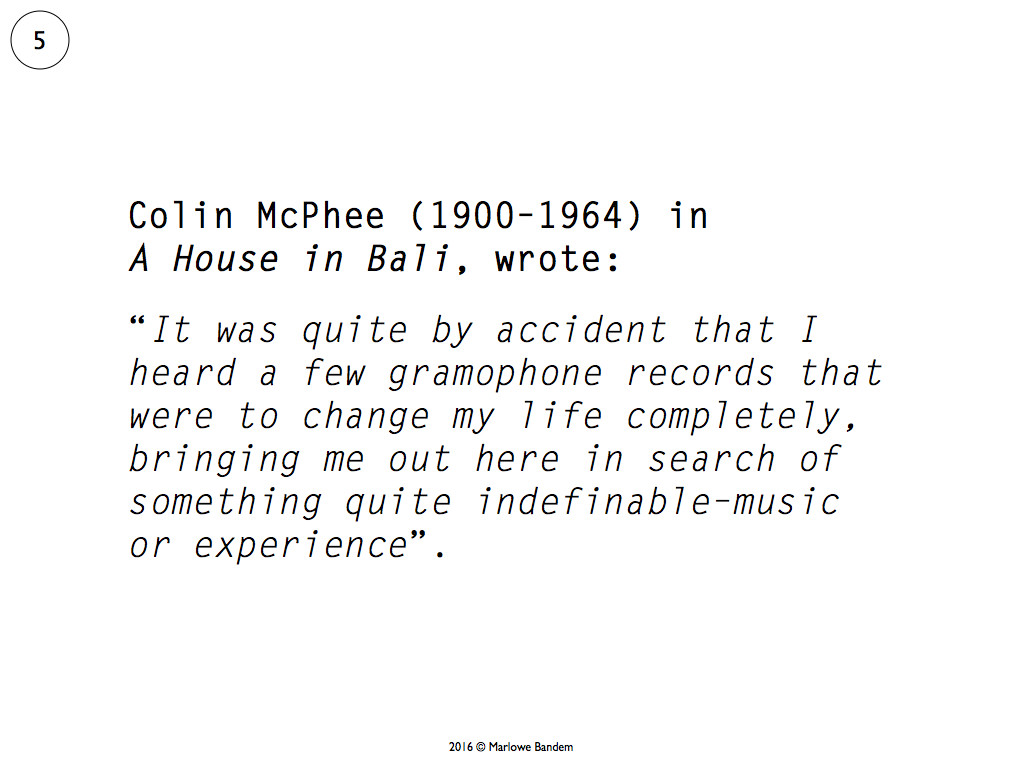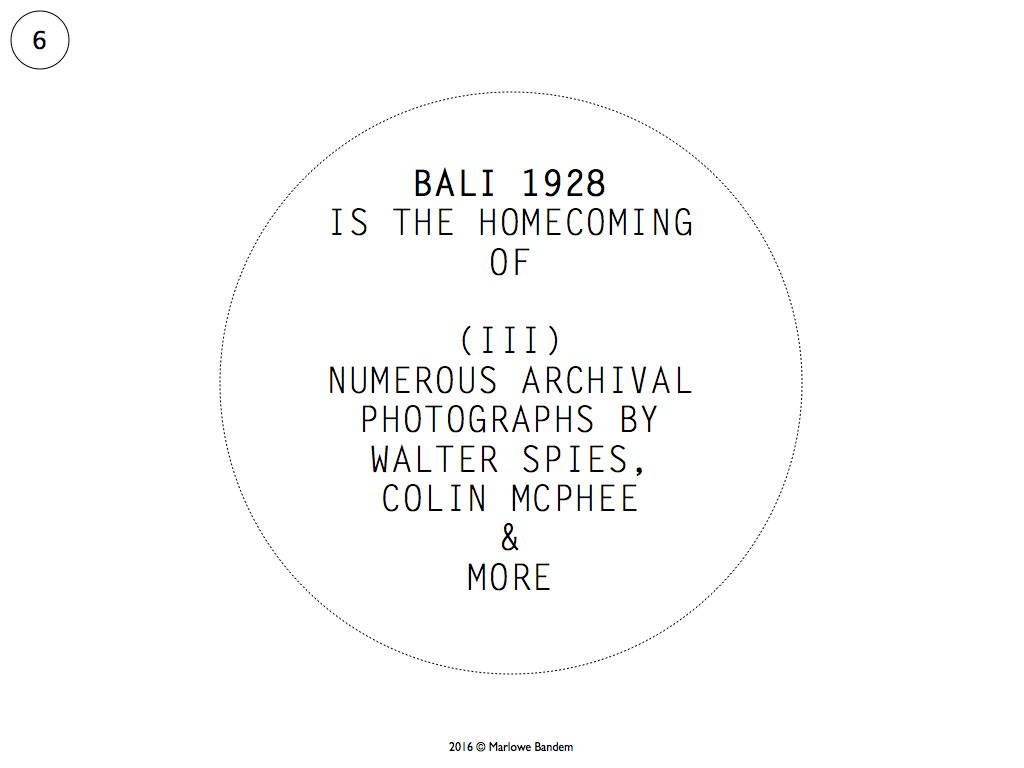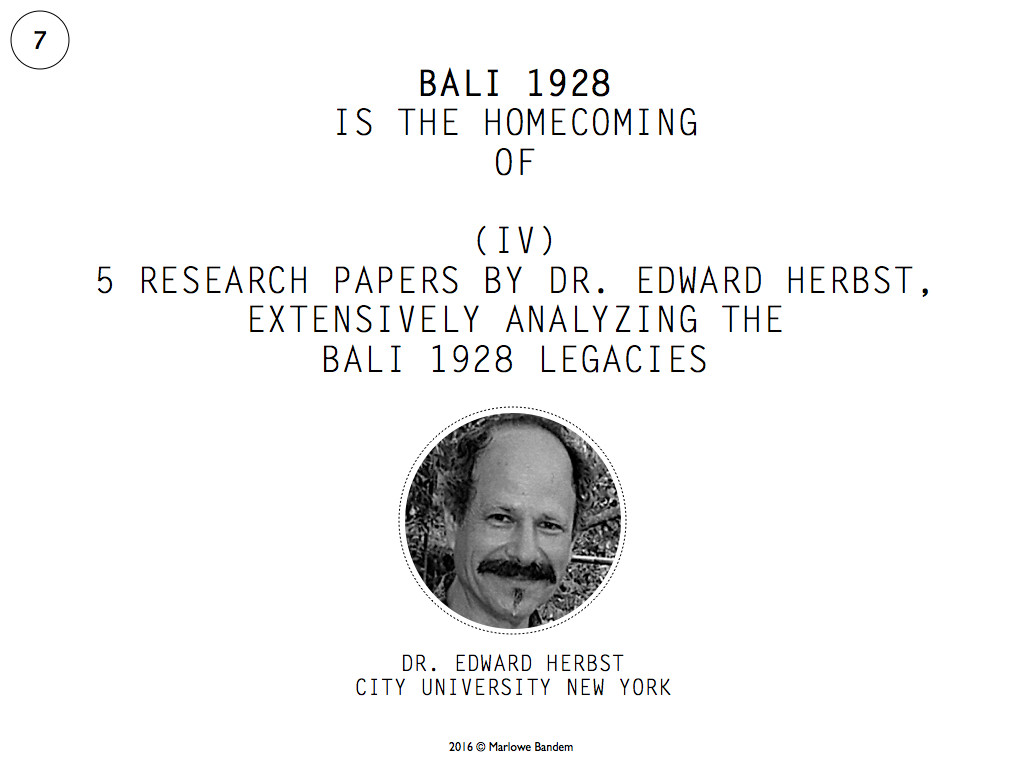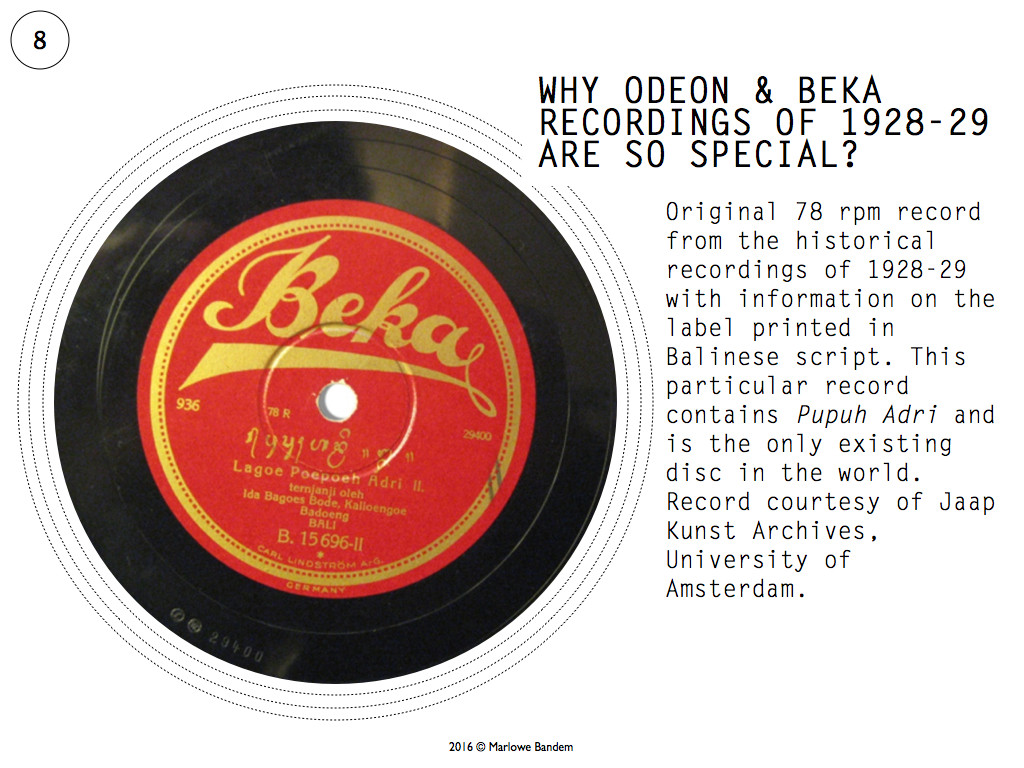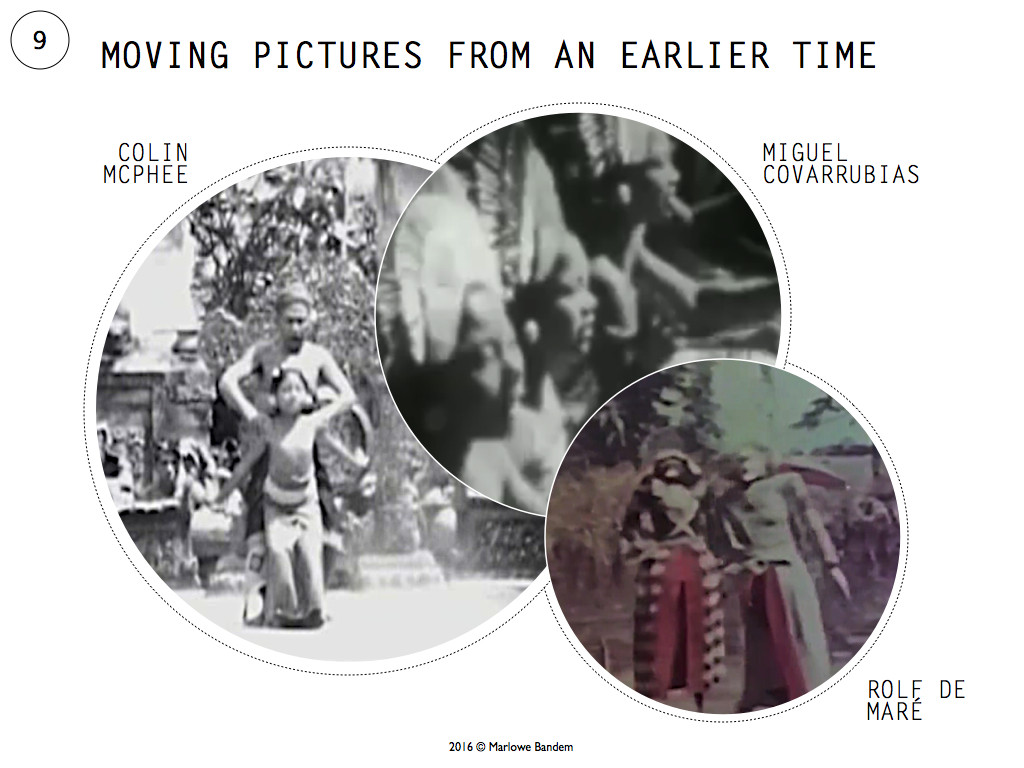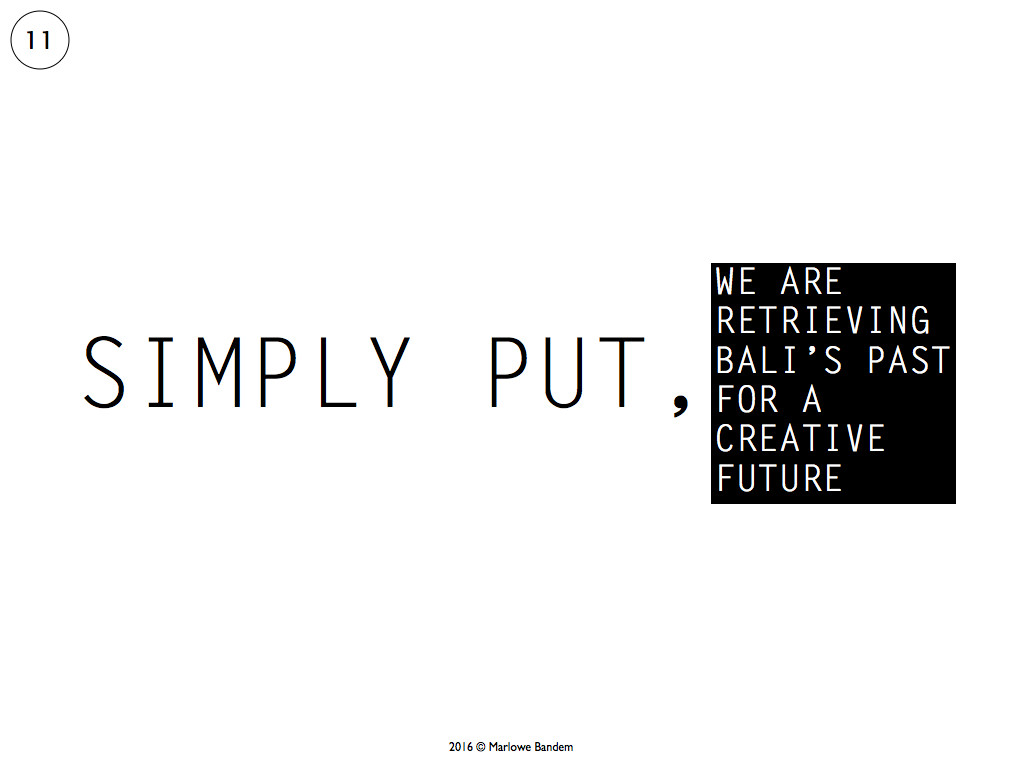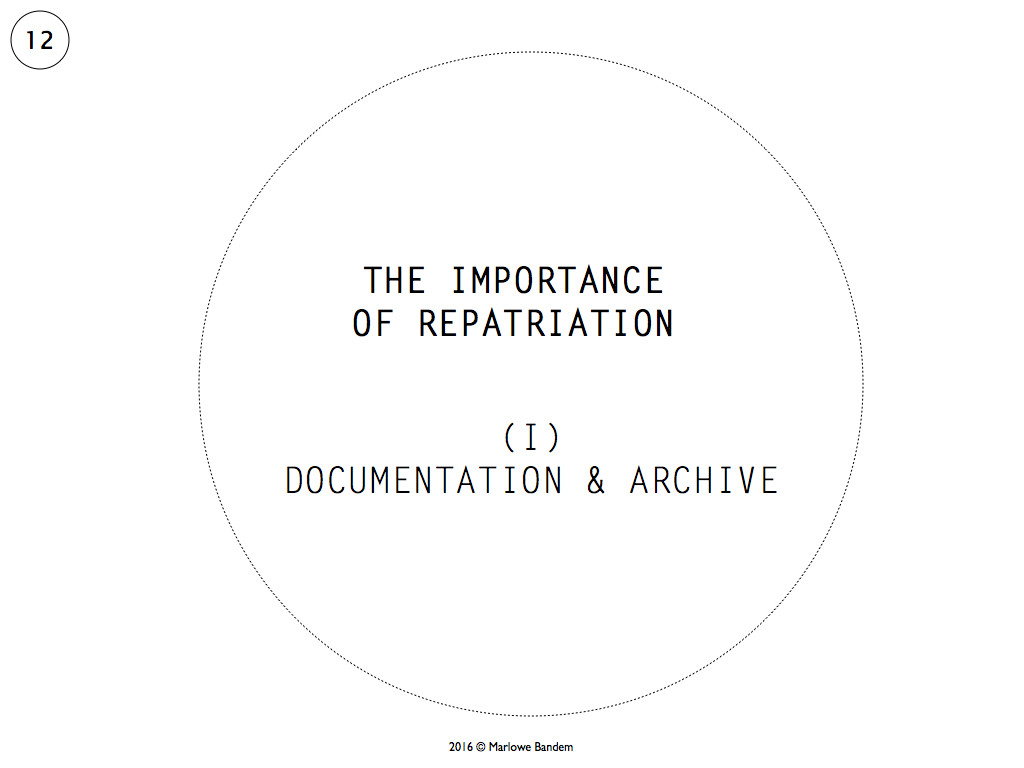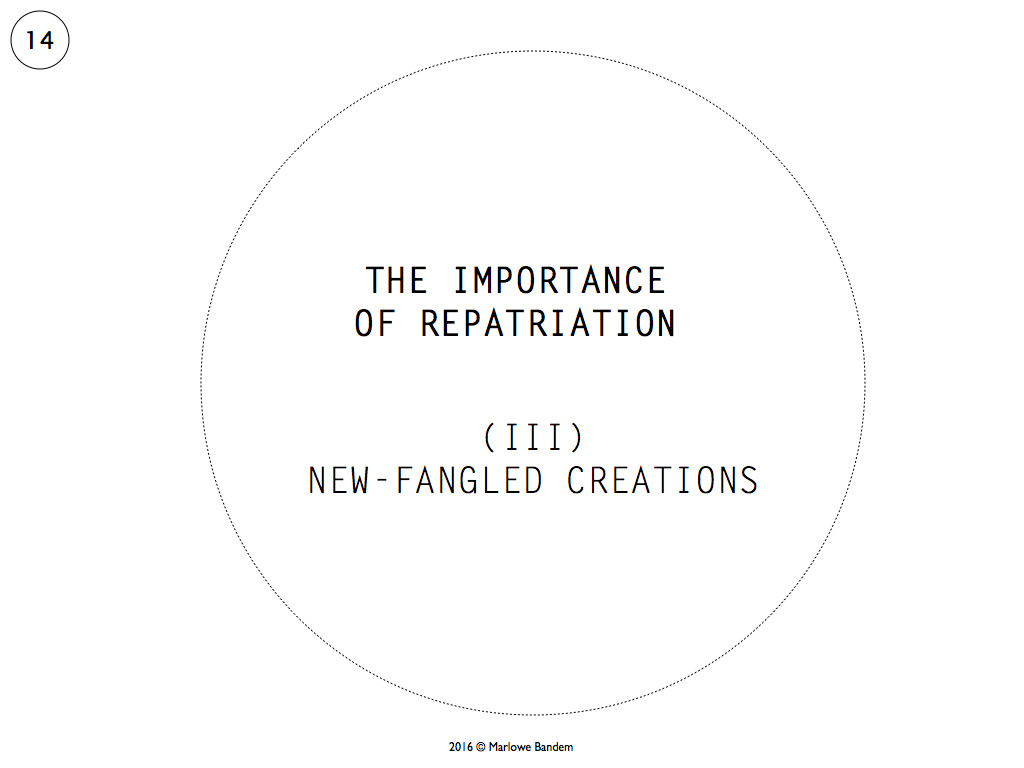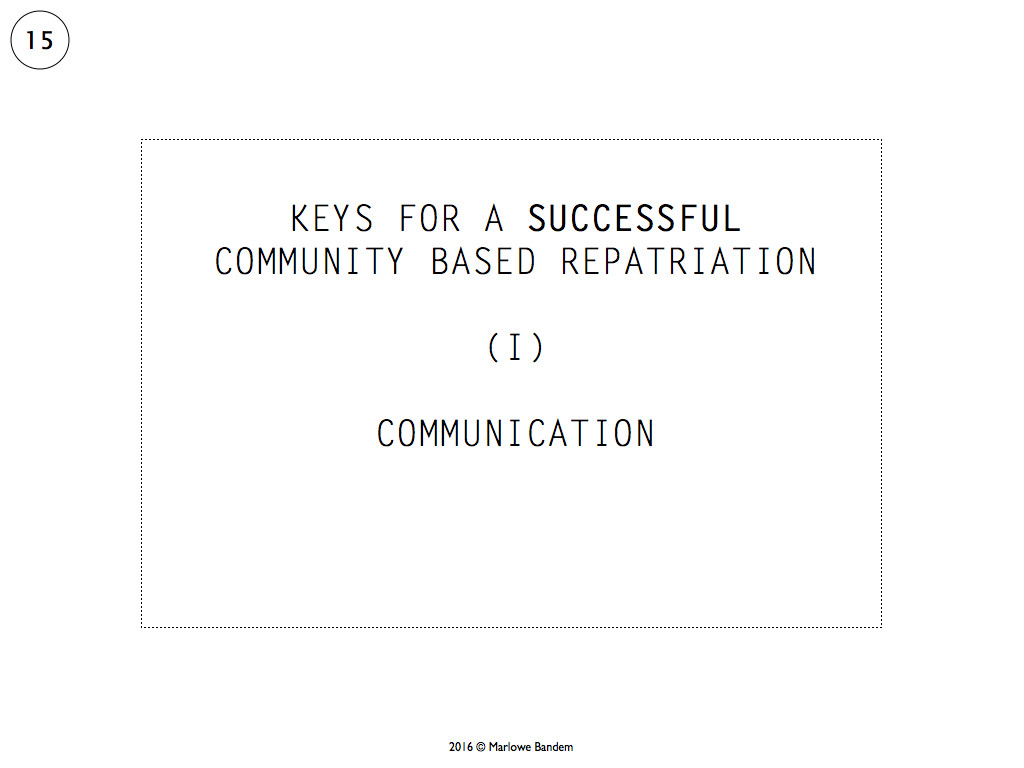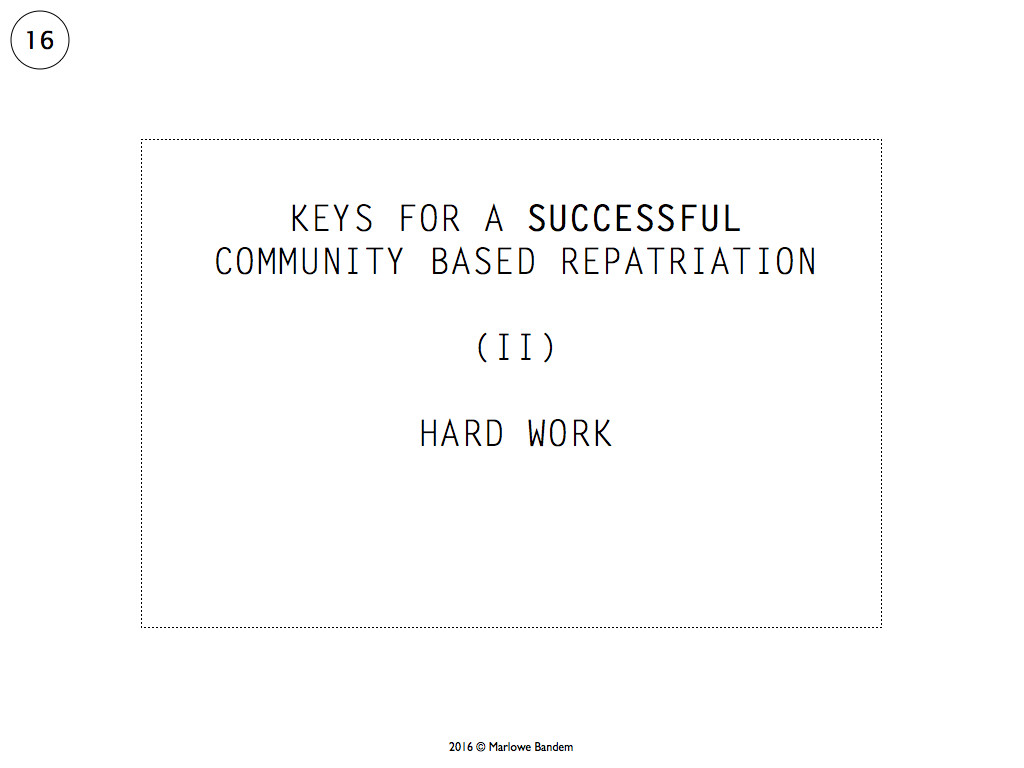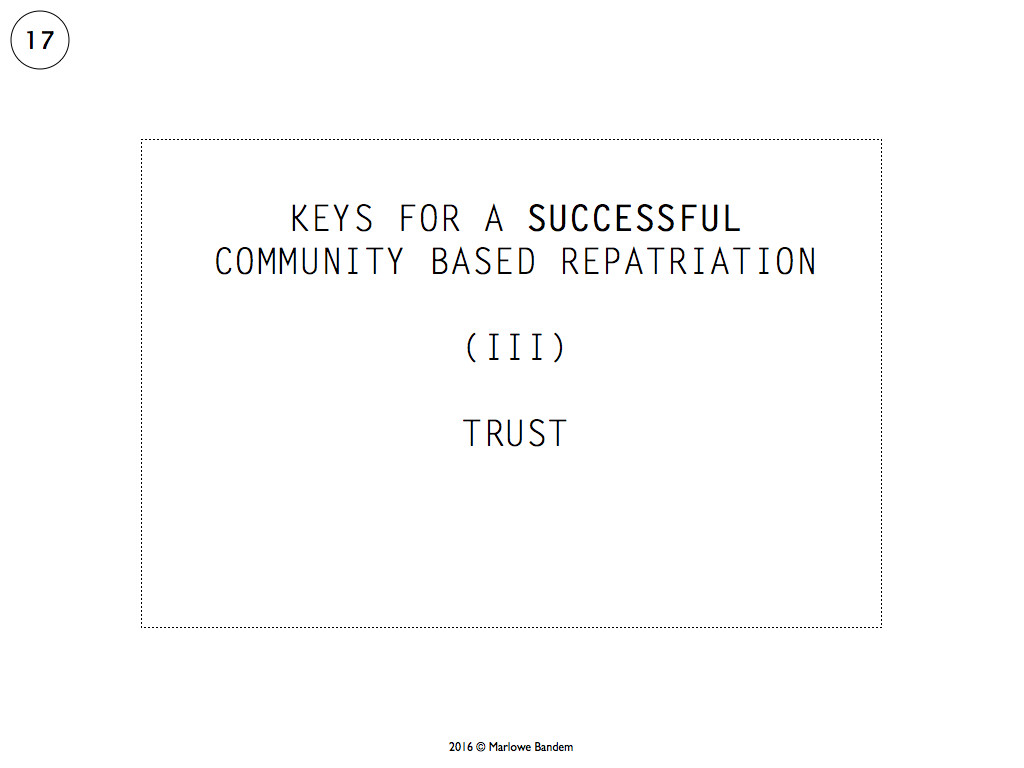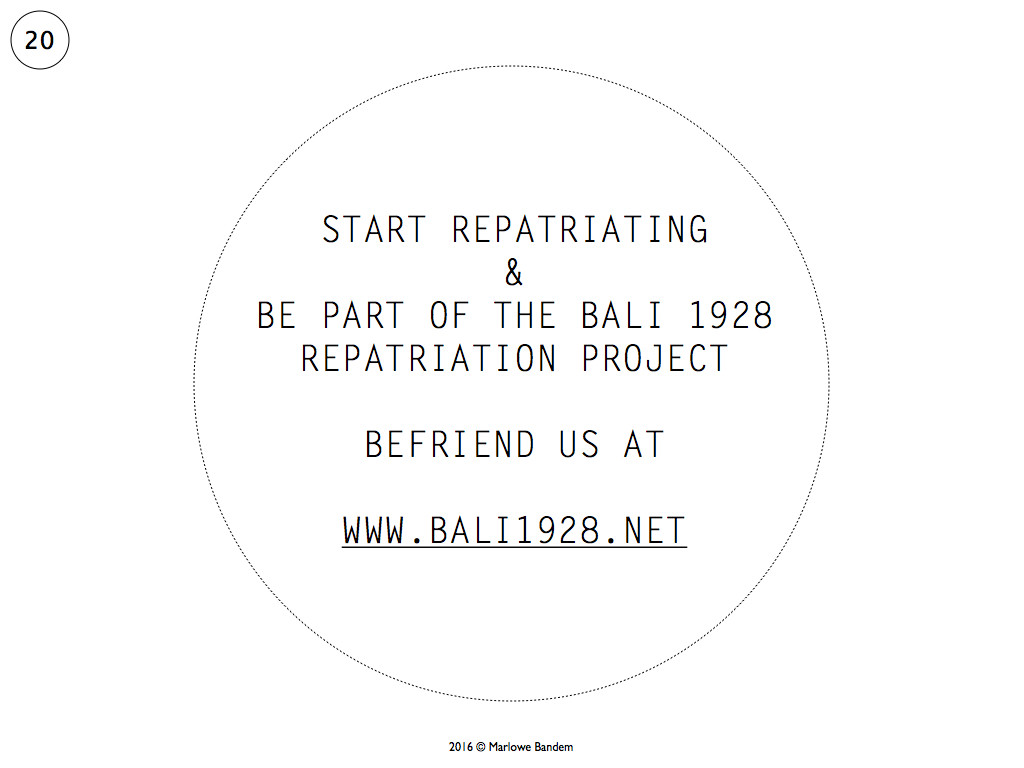On behalf of Dr. Edward Herbst and the Bali 1928 team, our project coordinator in Bali, Marlowe Bandem presented theBali 1928 Project during the Kumpul Coworking Space 20×20 Gathering at Rumah Sanur Creative Hub on Februari 25, 2016.
20 x 20 is a unique, concise, fast presentation format of 20 slides, each for 20 seconds. We have not acquired the video footage of the actual presentation, however here are the slides, as a summary of what is Bali 1928 in a more elaborate manner of images and text.
Since 2013, I was part of such a challenging yet interesting project titled “Bali 1928: Restoration, Dissemination and Repatriation of the Earliest Music Recordings and Films in Bali”
This on-going international collaboration is supported by Andrew W. Mellon Foundation with Dr. Edward Herbst of City University of New York as principal researcher, Allan Evans of Arbiter of Cultural Traditions New York as audio restorer and myself as project coordinator here in Bali.
The main objective of the project is to digitize hundreds of 78 rpm records and hours of film footage made in Bali during the 1920s-1940s.
Bali 1928 is an elaborate and extremely stimulating example of what scholars call “repatriation”.
“Repatriation” is the return of objects and documents held in archives, museums and private collections to the country or community from which they were originaly obtained.
Repatriation is gaining plenty interest on the minds of archivists and museum specialists
today because they hope the collections they have worked hard to organize and preserve will prove useful to individuals and communities seeking to create a new future.
The first agenda of the Bali 1928 project is to retrieve and repatriate – from all over the world – over one hundred recordings of Balinese gamelan dan singing recorded in Bali during the years 1928-1929 by German record label Odeon & Beka.
The 1920s was a crucial time in the island’s musical history with the rise of a new fast-lightning gamelan style called kebyar, emerging from the North to the South of BAli. This artistic revolution resulted the influx of many foreign scholars to the island.
Assisted by renowned German painter Walter Spies and Balinese dance maestro Ida Boda, Odeon & Beka produced hundreds of 3 minutes gamelan recordings including seminal kebyar compositions from legendary groups all over Bali and Balinese singing styles that are nearly forgotten over the years.
Our second task was to repatriate hours of film footage about Bali in the 1930s that were recorded by foreign scholars Colin McPhee, Miguel Covarrubias and Rolf de Maré.
McPhee and his wife, anthropologist Jane Belo, were inspired to embark on a visit to Bali in 1931 which grew into a research expedition to consume them over the course of eight years and lead to his major work of scholarship Music in Bali.
Miguel Covarrubias is a famed cartoonist, illustrator and painter from Mexico who live in Bali during the years 1931-1935. One of his greatest work is the book Island of Bali, comprehensively writing about the Balinese nature, arts, languange and customs.
Last but not least, Rolf dr Maré of Sweden is a world art collector, who only in a span of one year (1937-1938) managed to collect 49,000 feet of 16mm film recordings of dances from Sumatra, Java, Celebes and Bali.
Colin McPhee was inspired to take on the jorney to Bali once he heard several of the original Odeon & Beka 78 rpm records in New York during the year 1931 brought by the famed sculptor Clare Holt. The interest to visit Bali grew greater after he saw gamelan and legong dance performances at the Dutch Indies Pavillion at the 1931 Paris Exposition. The short intended visit grew into a research expedition of 8 years. His stay was fruitful to him and Bali. His compostion Tabuh-Tabuhan: Music for Two Pianos that is based on Balinese gamelan won the Academy of Art & Letters Award in 1954.
We are also fortunate because the Bali 1928 repatriation project was granted permission to reproduce hundreds of archival photographs not only by Walter Spies, Colin McPhee, Arthur Fleischmann, but also from families of numerous artists involved in the original Odeon & Beka recordings in 1928.
Our second exhibition of these images from the past will be coming this March in Ubud, curated and restored by the one of the countrys most eloquent visual bards, Rio Helmi.
To complete, the Bali 1928 also is the homecoming of 5 extensive research by Dr. Edward Herbst, who worked more than a decade to trace and compile these awe-inspiring legacies of Bali’s past. For two years we worked together acquiring funding and permissions to publish all materials from their respective owners. An expert of Balinese singing of tembang, kidung and kakawin, Pak Ed’s (as we call him) passion and knowledge of Balinese art and culture was instrumental in the success of this project.
What makes repatriating the Odeon & Beka collection very special?
1. It is the first ever large scale commercial recording of numerous famous Balinese sekaa, singers and performers.
2. As Odeon and Beka realized the project was a commercial failure – partly because the Balinese public couldn’t afford the expensive technology and there was a world of live and free performances happening daily in the thousands of temples and households throughout the
island – it is believed one agent destroyed the remaining unsold records in Bali out of frustration.
3. Only a third of the Odeon & Beka recordings made it abroad and appeared in Europe and America.
In regards to the silent films by Colin McPhee, Miguel Covarrubias, and Rolf de Maré, repatriating the collections are important because:
1. The films were part of personal research materials and never have been published for public consumption.
2. Footages especially by Colin McPhee have been ghosts, untouched for more than 40 years in archival shelves at UCLA.
3. There are excerpt of dance styles that are nearly forgotten or has changed significantly over the years.
4. The films are authentic and credible sources of the Balinese landscapes, landmarks, arts, temples festivals, customs and way of life that has dramatically changed less than a century.
The archival photography collection are very important too because these stark images are reminders of a revolting, brave and devoted Balinese generation that are creative, genuinely innovative, and most important open to the world. Images of young Ida Bagus Oka Kerebuak, Marya, Kaler, Lotring, Ni Gusti Putu Rengkeg, Ni Pempen and other brought tears of joy to their families.
We need today’s generation to be proactive in the efforts of repatriation. We have the methodology and expericence in doing so, thus we encourage the Bali Provincial Government to start a d support a large scale community based repatriation program, where people come together, compiling artifacts of the past, either audio, video, manuscripts and photos and conduct digitalization. This would lead to a community based archive of Balinese arts and culture.
The first importance of repatriation is for Documentation and Archive purposes. Audio and video recordings are necessary in the effort of building a comprehenseive catalogue of all forms of arts of a community or locality. This then lead inventories and mapping of styles among communities.
For instance, we have mapped the distinct styles of kebyar among communities of Pangkung, Busungbiu and Belaluan. One can observe that Belaluan in the South plays more subtle and eloquently in contrast to the fast paced playing in Busungbiu, North Bali.
Secondly, as an integral aspect of culture preservation, art repatriation can be used as the basis of learning the origin of art styles and genre, then the understanding of sosial, cultural, economical background od a particular soicety, and lastly the symbolic communication and interaction among creators and communities around the island.
Thirdly, repatriation is a stimulus for new-fangled art creativity. Utilizing past achivements as the base of exploration, improvisation, and reconstruction will sustain the longetivity of the arts and culture, adapt creations to changing times, widespread dissemination among communities and inovate traditional art into the realms of conceptual, experimental and contemporary arts.
Bali 1928 is full of challenges. Not only working cross borders, between New York and Bali, firstly and foremost we had to assure all collectors, archives, foundations and museums that this international collaboration is a cultural engineering project, not full-on commercial. It took us years to convince all to give us permission and licenses to include all materials for a comprehensive repatriation project. The hardest part was to convince all to grant license for us to publish all findings via the World Wide Web.
Truly, clear and concise communication is the first key to a succesful repatratian effort.
Furthermore, based on the original Beka & Odeon catalogue as well as notes by Andrew Toth, Philips Yampolsky, Walter Spies letters, Edward Herbst started to trace and compile all materials for our production. It took him a decade visiting archives, museums and even an auction in rural Texas to aqcuire all Odeon & Beka recordings. It took him years to write about it and it took me one year to translate and edit the 600 plus pages of writings into Indonesian
Hard work is imperative in repatriation.
As Allan Evans of Arbiter of Cultural Traditions restored the quality of the recordings and Bali’s own Ridwan Rudianto worked frame by frame restoring, editing and checking the film footages, Edward Herbst and I outlined a strategy to complete the project as expected, as well as outlining dissemination strategis that would work for the public, especialy the Balinese. Our goal is to have a credible and effective repatriation project that hopefully would set a benchmark for future efforts.
Trust is a must among all parties in a reaptriation effort.
As we complete the first step of repatriating the Bali 1928 legacies as 5 volumes of CDs and DVDs as well as a simple archiving hub via the Internet, I reach out to you all to access our materials, listen to the recordings, watch the videos, read all essays by Edward Herbst and help us spread this good cause. I do believe you can assist us in identifying places and personalities in the archive and provide input for future improvements.
On-going strategic cooperation among public, government, academics is the fourth key of success.
After embracing and taking part in this project, now, I am a changed person. I have an even stronger conviction about my art and cultural roots, and I believe we can excel and complement the achievement of the 1928 maestros. Preservation of the past, allows us to nurture present creativy and foster future innovation of the arts and culture.
Surely, the main ingredient of a succesful repatriation project is unyielding passion and love. I love Bali and proud to be a Balinese.
Dear all, you have been a great audience, thank you for being so kind and attentive to me. May this 20×20 presentation inspires you, and let us embark a journey together, celebrating the vast wonders of the past, and build upon it as part of a mutual understanding, multi culture world that we are. Matur suksma!

